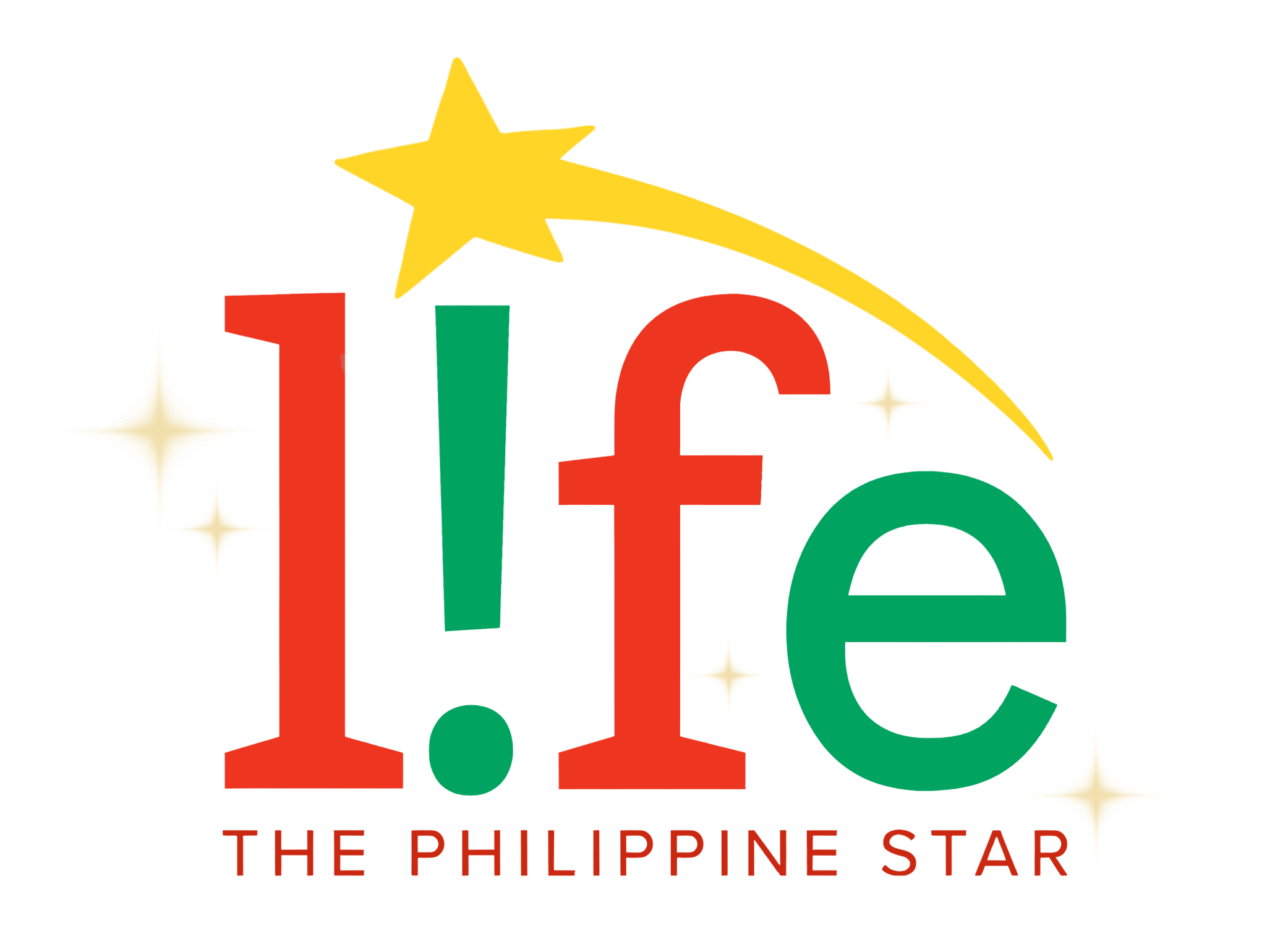Family formations
In “Reflections, in situ,” the collaborative exhibition by father-daughter duo Jon and Hanna Pettyjohn (showing at Silverlens Gallery until April 25), clay is not only medium but memory, language, and legacy. Their works—conceptualized and formed in dialogue—reflect a tactile sensitivity to the material capacities of ceramics and painting and a profound intimacy with landscapes, both literal and familial, that surround them.
In the landscape of ceramics, Jon Pettyjohn has been a stalwart figure, producing sensitively crafted sculptures that trace vivid landscapes influenced by the artist’s surroundings. A deep rootedness—to material as well as place—informs Jon’s ceramic work.
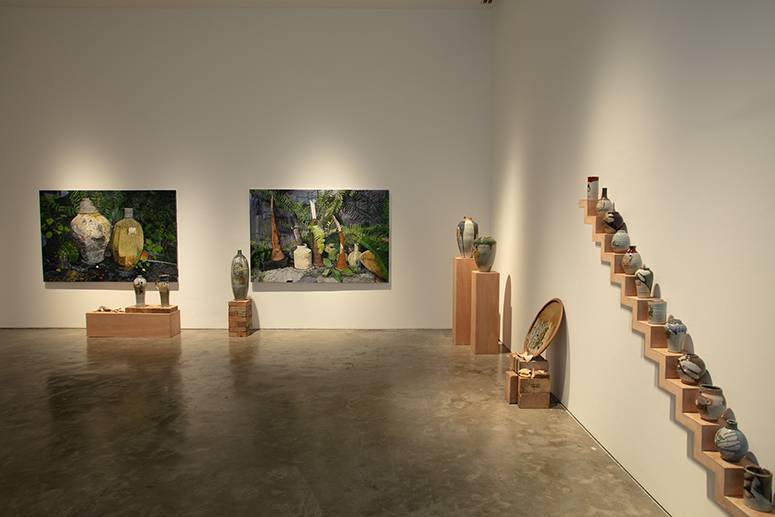
Based at the foot of Mount Makiling, his vessels often carry the earthiness of their source: clay, ash and stone gathered near the family home and studio. His approach, shaped by decades of practice, bears the fingerprints of tradition while quietly expanding it—refined yet raw, utilitarian yet spiritual.
Hanna Pettyjohn’s practice brings an equally introspective but distinctly hybrid sensibility. Her contribution to “Reflections” is shaped not just by family memory but also by her evolving exploration of diasporic identity and material. The current show builds upon the themes of her 2020 exhibition “In Media Res,” in which she digitally manipulated documentation of her own past works to produce a series of enigmatic prints and paintings.
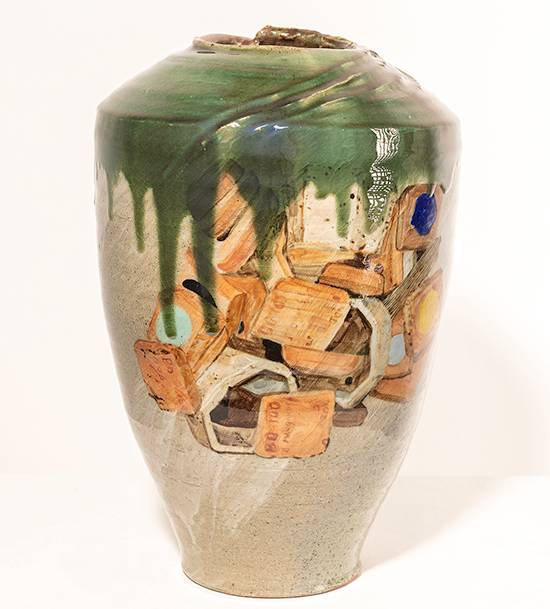
That gesture—treating her own art as raw material—reverberates here in her collaborative works with Jon. Past and present are layered into one another, transformed through repetition, memory, and re-interpretation.
In her large-scale paintings in “In Media Res,” Hanna presented abstracted landscapes composed of lake shorelines, debris, and traces of human presence. Tarps, fabric, construction rubble—elements of the built and discarded world—hover beside natural forms.
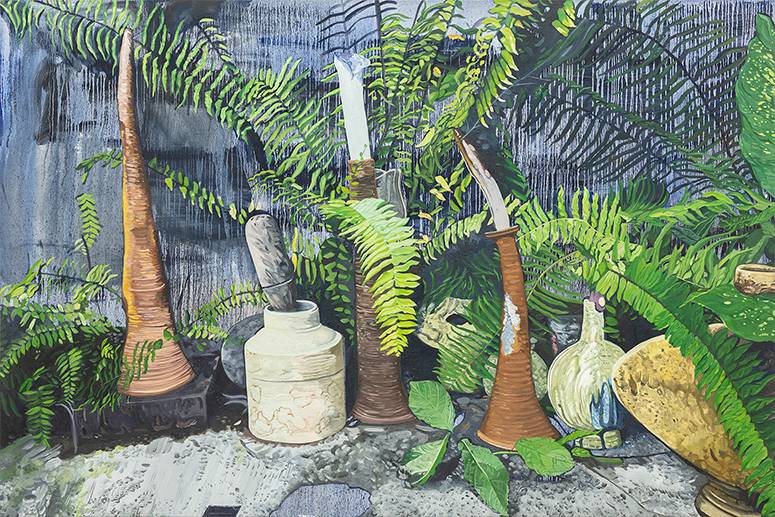
This same playfulness with media—between sculpture, painting, and found imagery—animates the collaborative jars made with her father. His thrown forms become surfaces for Hanna’s evergreen oil works. Her painted vignettes depict broken shards, studio remnants, and memory traces, all delicately balanced between representation and abstraction.
Together, their works speak in a cycle of call and response. Jon shapes the vessel; Hanna interrupts, completes, or reinterprets it. In pieces like “Production/Pre I,” a perfectly proportioned pot is overlaid with cascading fragments which becomes an index of the discarded. Meanwhile, in “Production/Pre vi-xvii,” a set of ceramic pots is staggered over a wooden formation that showcases each work’s intricate detail. The line between process and product blurs; failure is folded back into form. What might have once been called detritus becomes a gateway for discovery.
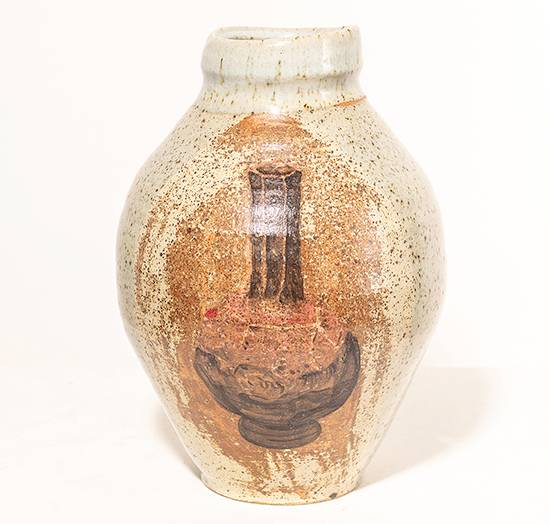
This dialogue across generations, places, and disciplines is central to the ethos of “Reflections, in situ.” But beyond their familial dynamic, the exhibition meditates more broadly on the fragility and persistence of form. These are not objects that aspire to perfection. Instead, they revel in the imperfect: cracked surfaces, off-kilter marks, traces of labor.
The result is a work that feels at once grounded and poetic, borne from the earth but suspended in time. “The expression is really in the process,” Jon said about his ceramics practice. “Not so much in the finished work, but in the way you do the work.”
In the end, the show at Silverlens Gallery offers a philosophy of artmaking that is tactile, temporal, and tender. In this collaborative show, notions of past, present, and future are in persistent flux, always being shaped through the hands of those who inherit it.


